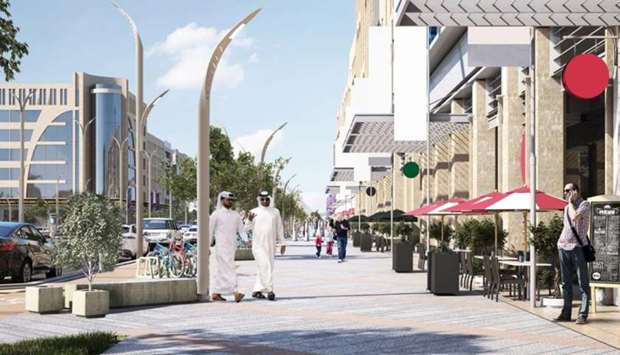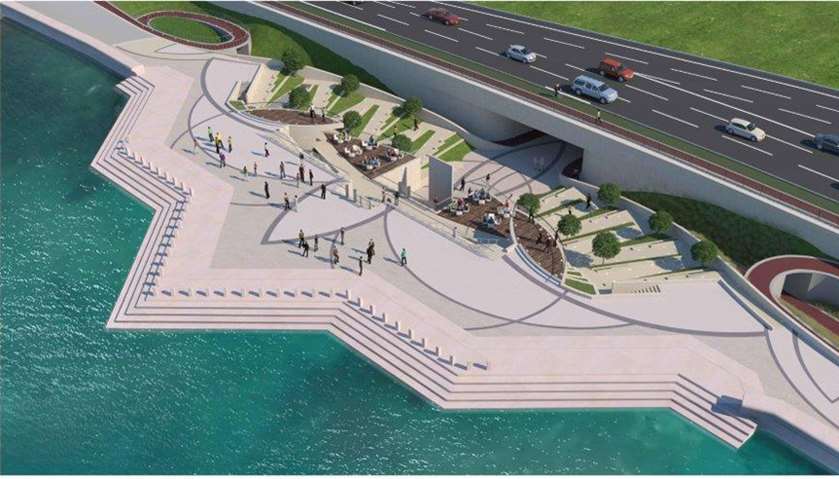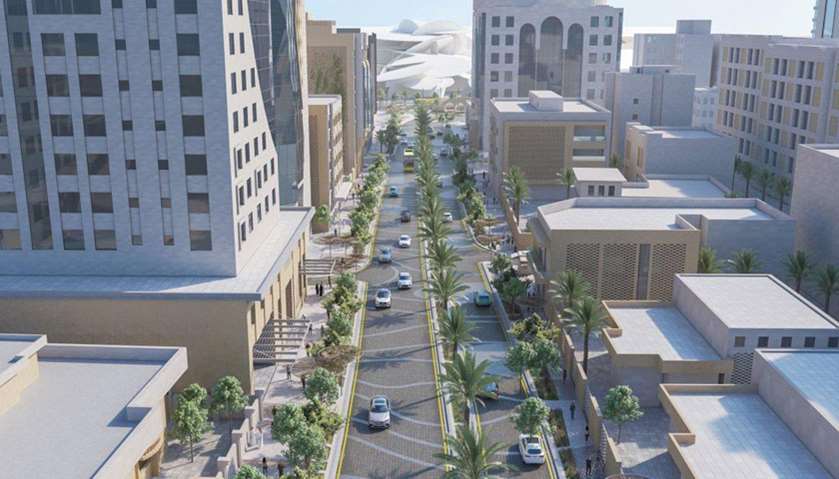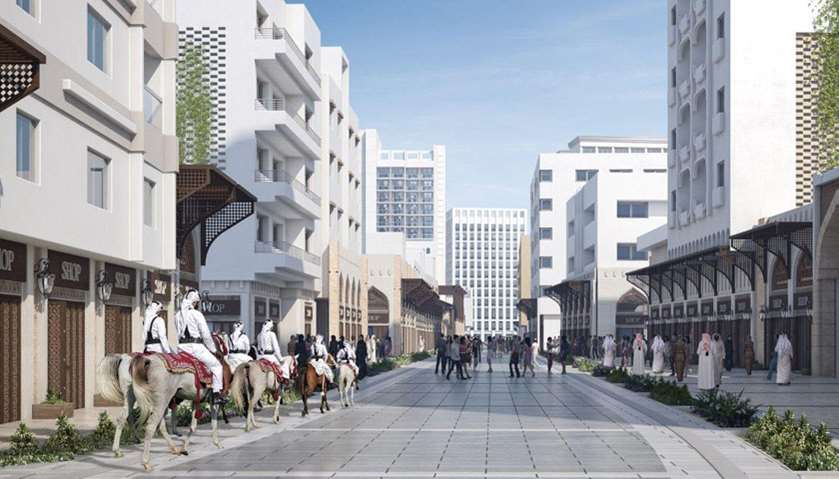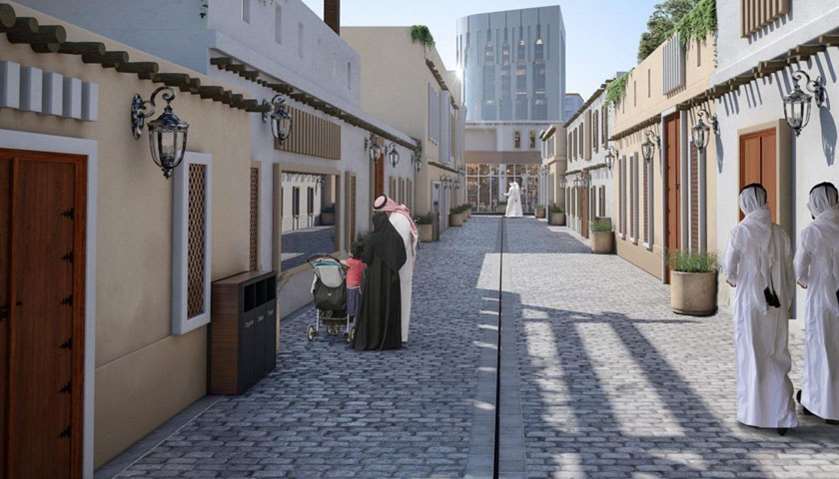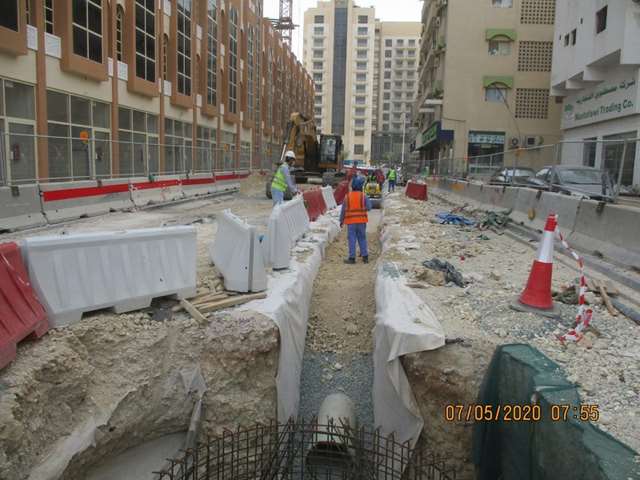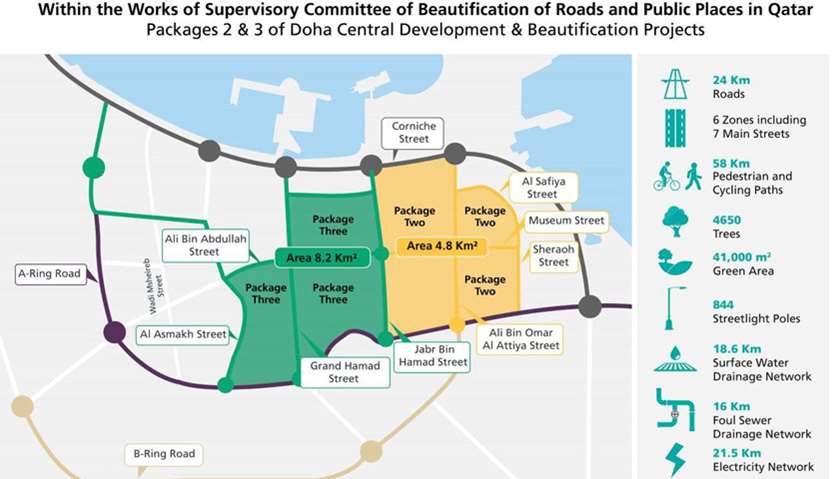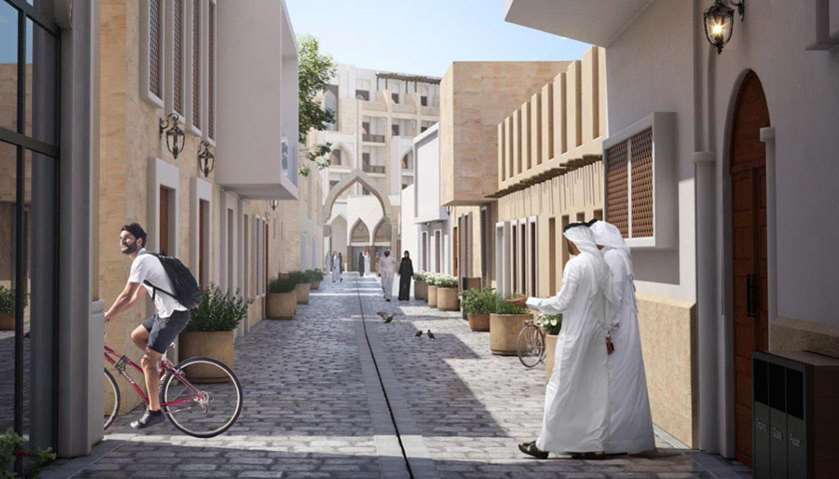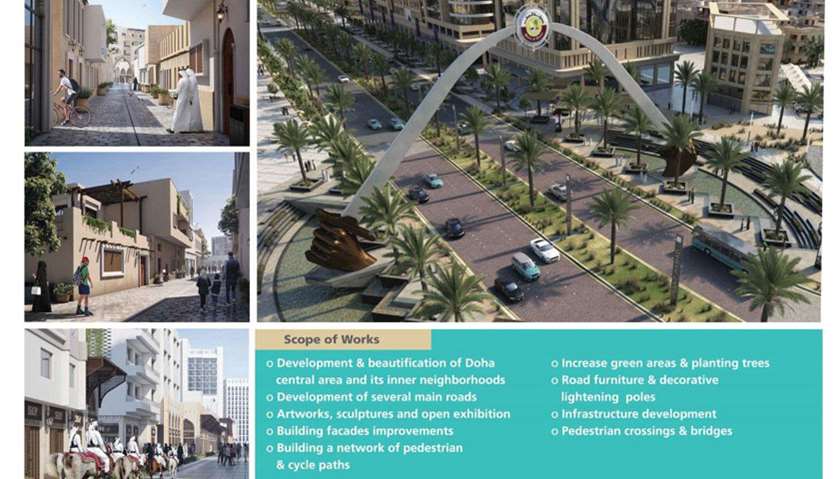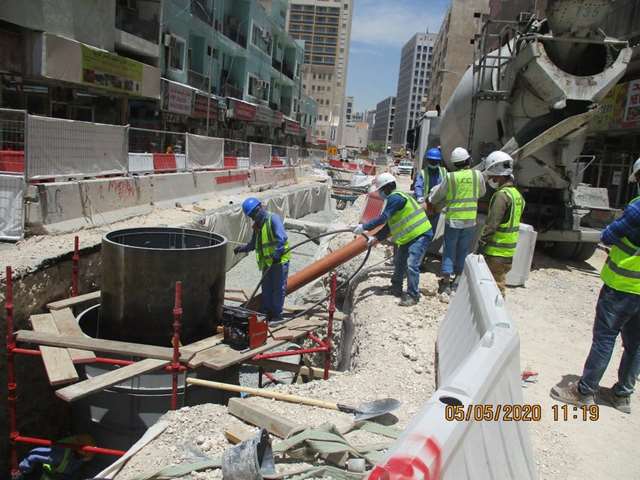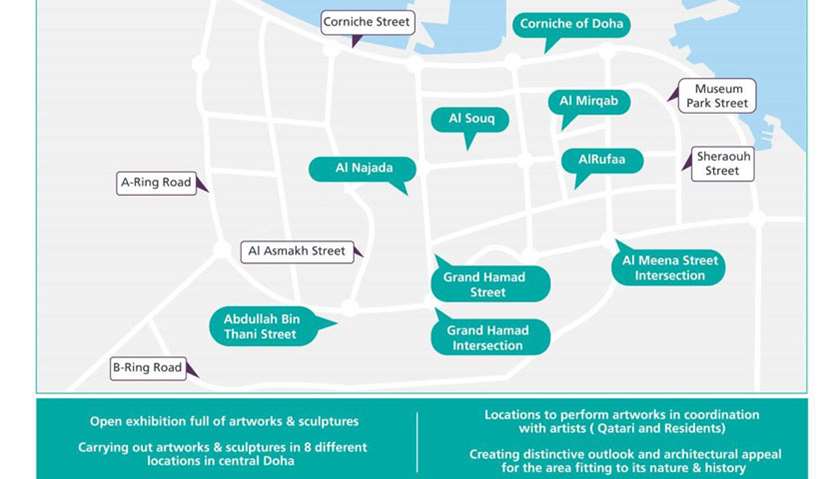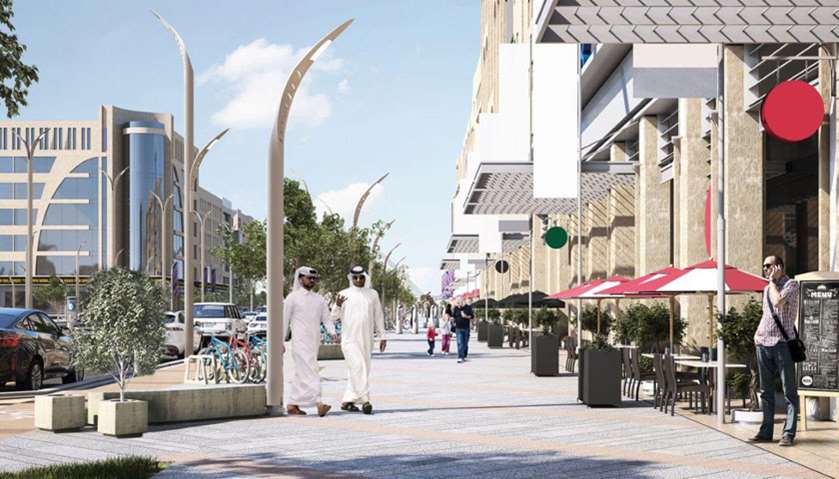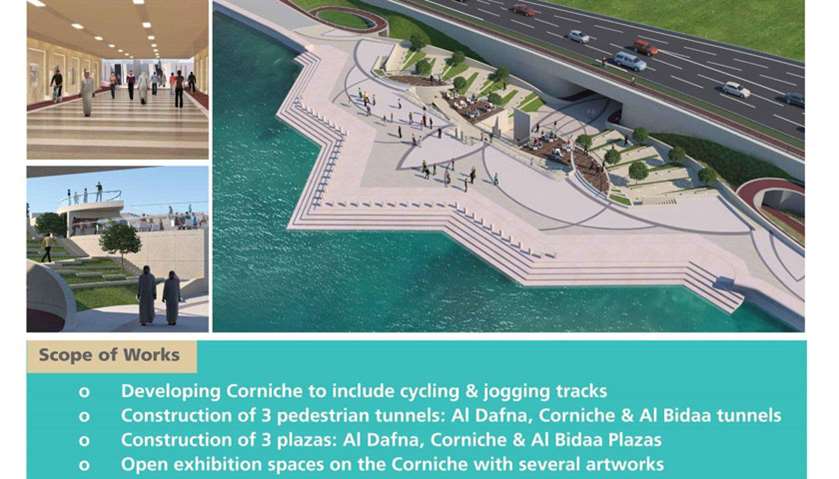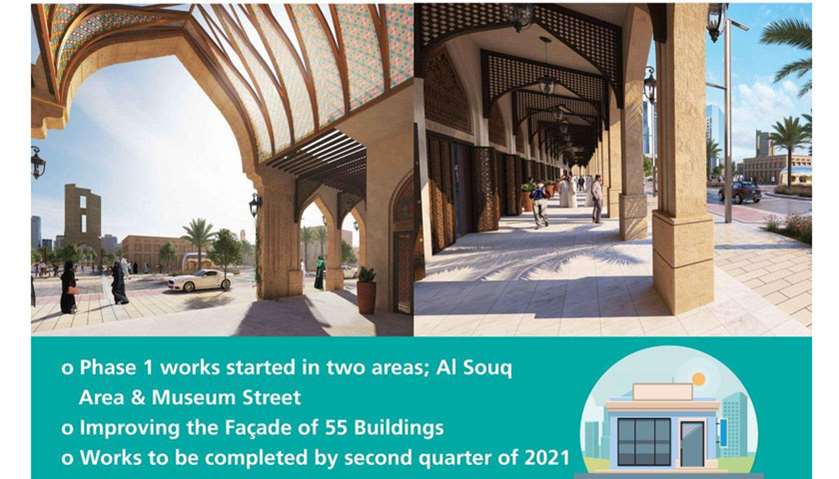The Supervisory Committee for the Beautification of Roads and Public Places in Qatar at the Public Works Authority (Ashghal) announced Sunday the start of implementation works on the second and third packages of the Doha Central Development and Beautification Projects.
Engineer Hassan al-Ghanim, assistant manager at Doha Central Development Projects, said that the second and third packages include the development of six main areas between Corniche Street and A-Ring Road.
“They cover seven main streets where infrastructure development, construction of plazas, pedestrian and cycle paths, installing street lighting network, new traffic signals, road signage and pedestrian crossings will take place. Works are scheduled to be completed in the first quarter of 2022,” he said.

Clockwise from top left: Engineer Hassan al-Ghanim, Engineer Layla Jassem Salem, Engineer Ahmad Abdulla al-Mahmeed, Engineer Ali Mohamed al-Darwish, Engineer Ahmed Ali al-Emadi, Engineer Fatema al-Zaraa
Project manager Engineer Ahmed Ali al-Emadi said that the project includes developing the areas surrounding the National Museum of Qatar and Museum of the Islamic Art (MIA).
“The works are divided into three sections, spread over an area of 4.78sq km. The infrastructure development works in this package include developing 8.5km of surface water drainage network, 4.7km of foul sewer network, and 6.8km of electricity network.
“These are in addition to installing 329 decorative lighting poles, planting about 1,400 trees, developing 10,000sq m of green areas, and construction of 22.6km long pedestrian and cycling paths,” al-Emadi said.
Project manager engineer Ali Mohamed al-Darwish said that the third package includes development of areas around Grand Hamad Street, divided into three main areas spread along 8.24sq km.
The works here cover the development and beautifying of the main streets and inner neighbourhoods of these areas, in addition to infrastructure development works, including 10.2km of surface water drainage network, 11.2km of foul sewer drainage network, and 4.7km of electricity network.
Works also include installing 515 lighting poles, planting about 3,250 trees, and about 30,000sq m of green areas in addition to construction of 35.3km of pedestrian and cycling paths.
The Ashghal official said that all the main streets will be covered with granite to give a unique feature to this area, completely closing the street to vehicles and opening only to pedestrians during celebrations and special occasions.
Doha Central Development and Beautification Projects Designs manager Engineer Layla Jassem Salem that the project creates a healthy socialising cultural environment that will encourage people to adopt a healthy community lifestyle, besides rerouting destinations of their fun trips.
“The project is designed to provide pedestrian-friendly transportation, including footpaths and crossings, to encourage visitors using various modes of transportation, and to promote walking by connecting all lively centres in the area,” she said.
It includes the development of seven main areas and seven main streets, and the works will cover the development of infrastructure, building plazas, pedestrian and cycling tracks.
Implementing the complete vision of development of the area will contribute to enhancing the identity of Qatar's historical and cultural legacy, and recognising the country’s natural environment.
The area was chosen as it contains many tourist attractions, such as the Corniche, Al Bidda Park, museums (the Museum of the Islamic Art, the Museum of Fine Arts, and the National Museum of Qatar), and shopping and entertainment centres such as Souq Waqif, Falcon Souq and Dar Al Kutub library.
The project also aims to develop public places and plazas in the region to create attractive and lively places through the provision of services and aesthetic elements, including rest areas, benches, kiosks, display screens and visual art works, attracting visitors to socialise and enjoy the view.
This is in addition to beautifying the main and inner streets to raise the aesthetic value of the streets, residential areas and vital centres, and to preserve the environmental balance.
These projects will benefit all people and visitors of Qatar, especially the residents and business stakeholders of the areas covered within Doha central, including Al Hitmi, Al Rufaa, Al Mirqab, Souk, Old Al Ghanim, Al Najada, Al Jasrah, Msheireb 4, Fareej Bin Mahmoud, Fereej Abdul Aziz, and Al Doha Al Jadeeda.
The works of Doha Central Development and Beautification Projects cover Al Safiya Street, Sharaoh Street, Museum Street, Ali Bin Omar Al-Attiya Street, Jabr Bin Muhammad Street, Grand Hamad Street, Al Asmakh Street, Ali Bin Abdulla Street, and Abdulla Bin Thani Street.
In addition to the construction of multi-storey buildings, there would be roadside slots for car parking to accommodate about 6,000 cars.
The car parking lots will be fixed with meters to encourage the public to follow healthy means of transportation.
The parking lots are designed to benefit people with special needs, with pedestrian paths and connected paths that allow people with special needs to move freely.
There would be dedicated parking lots for people with special needs.
Other highlights are:
* Pedestrian Bridges – The works include a project to construct pedestrian bridges. Work has begun for the construction of some bridges, namely, a 63m bridge across Doha Expressway/22 February Street linking Al Nasr Commercial Street and Al Soudan Area, and a 38m bridge across Suhaim Bin Hamad Street linking Fereej Bin Mahmoud and Al Sadd Areas.
Similarly, the design of other bridges has been completed, and their implementation is scheduled to start this year.
It includes a 60m bridge across Najma Street connecting Old Airport and Nuaija Areas, and Al-Istiqlal Street Bridge linking the West Bay and Dafna.
This is in addition to other pedestrian bridges under bidding.
These pedestrian bridges are located in various streets including Al Jamiaa Street, 22 February Street, Khalifa Street, Al Sadd Area, and Al Muntazah Street.
All the pedestrian bridges will have elevators to serve people with special needs.
Also, they are designed without air conditioners to protect the health of users from the effects of sudden changes in temperature.
* Rain Water Drainage Tunnel – The project also includes a main surface water drainage tunnel. Project manager Engineer Abdulla al-Nuaimi said that it has been designed with a length of 2.2km and 3m diameter to accommodate up to 70,000 cu m of storm water.
* Electric Cars Charging Points – The project will provide dedicated places for charging electric cars, encouraging people to use environment-friendly cars, which do not cause harmful carbon emissions.
* Development of Doha Corniche – The project works also include development of Doha Corniche. Engineer Hassan al-Ghanim, project manager of Doha Corniche Development, said that the project is for developing the Corniche walkway to include a cycling path and a jogging path, and connecting it with tracks along Airport Road and Ras Bu Abboud extending to Lusail Expressway.
It also includes the construction of three pedestrian tunnels namely Al Dafna, Al Corniche, and Al Bidaa tunnels.
These tunnels are aimed at enhancing pedestrian movement and connecting commuters to neighboring places.
The project also covers the construction of three plazas on Corniche, namely, Al Dafna, Al Corniche and Al Bidda plazas, to function as open exhibition spaces along the Corniche, with several artworks.
* Artworks and Sculptures in Doha Central Area – The Technical Committee for Artwork (a sub-committee comprising members of the main Committee, Qatar Museum Authority and the Ministry of Culture and Sports) is studying a mechanism to involve local artists in proposing and developing some artwork in the area, utilising their extensive expertise to meet the needs in terms of idea and design.
This experiment will be unrolled to many other areas of the state in future.
Engineer Fatema al-Zaraa, member of the committee, said that Grand Hamad Street, Souq Area, Al Meena Street Intersection, Abdullah Bin Thani Street, Al Mirqab Area, Al Najada Area, Grand Hamad Intersection, and Al Rifaa Area have chosen to implement the artwork.
These artworks are scheduled to be completed in the first quarter of 2022.
* Modifying Building Facades – The project works include the modification and beautifying of the facades of architectural buildings to accomplish the comprehensive developmental vision of the area.
Engineer Ahmad Abdulla al-Mahmeed, of the Building Projects Department at Ashghal, said that design and implementation work has begun in the Souq and Museum Street areas to modify the facades of 55 buildings.
Work on those areas are to be completed in the second quarter of 2021.

